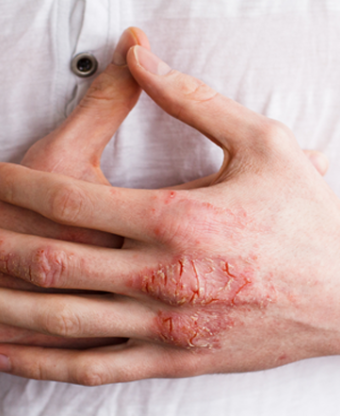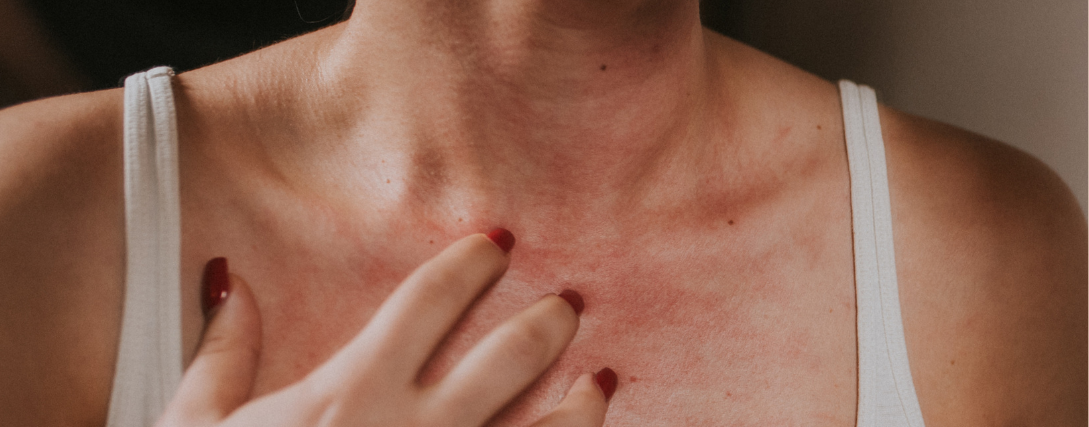A Patch test is a diagnostic procedure used to identify allergens that may be causing eczema, specifically allergic contact dermatitis or occupational contact dermatitis.
Patch tests
Understanding Patch Testing: A Detailed Overview


Warning: If you are pregnant, breastfeeding, have recently exposed the area of your body (your back) to the sun where the sticker strips will be placed, or have sunburn, redness, rash, etc., it would be best to postpone this test.
Who are the tests for?
Clientele at risk and allergens tested
These tests are particularly relevant in professions exposed to potentially allergenic products, notably dentists, hairdressers, and others. Indeed, these professions often involve the handling of substances such as nickel, perfumes, hairdressing products, makeup, etc., which can trigger skin reactions on the face, eyelids and hands.
Patch tests can be carried out at any age. They consist of applying these allergens to self-adhesive strips attached to the skin, generally on the back, in order to identify the allergen responsible for the symptoms observed.

Before your 1st appointment:
Refrain from taking Prednisone thirty (30) days before and throughout the duration of the test (topical cortisones applied other than at the site of Patch Test installation (on the back) can be continued if necessary) ;
Plan to shave your back 24 to 48 hours before your first appointment if you have a lot of hair.
On your first visit:
By a physical examination, an assessment of potential causes will be carried out so that we can identify potential suspect substances. During this visit, chamber strips filled with potential antigens will be placed on your back. This can sometimes be uncomfortable and you may feel itchy under one or more chambers.
Recommendations after installation:
Avoid scratching: itching is normal and scratching can change the test results;
Keep the area dry during the period when the chambers are installed (Do not immerse or wet the chambers, do not perform an exercise creating sweat, etc.);
Wear loose clothing and a t-shirt in bed to prevent the patches from peeling or coming off the skin. (If you notice such looseness, have someone apply the adhesive to the skin. If necessary, you can also apply additional tape to the edges of the chambered units).;
Refrain from taking Prednisone 30 days before and throughout the duration of the test (topical cortisones applied other than at the Patch Test installation site (on the back) can be continued if necessary);
Avoid exposure to the sun.
During your second visit*:
During your second visit, the chambers will be removed by our medical team.
On your third visit:
Your results will be read. This reading will be done in clinic by our medical team. At the end of this procedure, you will receive the results, be informed of any allergies you may have and how to minimize a possible recurrence of your eczema by avoiding the offending products.
Your doctor will let you know if additional readings are needed over the next 5 to 7 days.
*The second visit may not be necessary. This will be established during your first appointment with your dermatologist.
Dr Marc-André Doré tells you about it on social networks
To learn more
Eczema
Signs and symptoms, causes, types, triggers and treatments